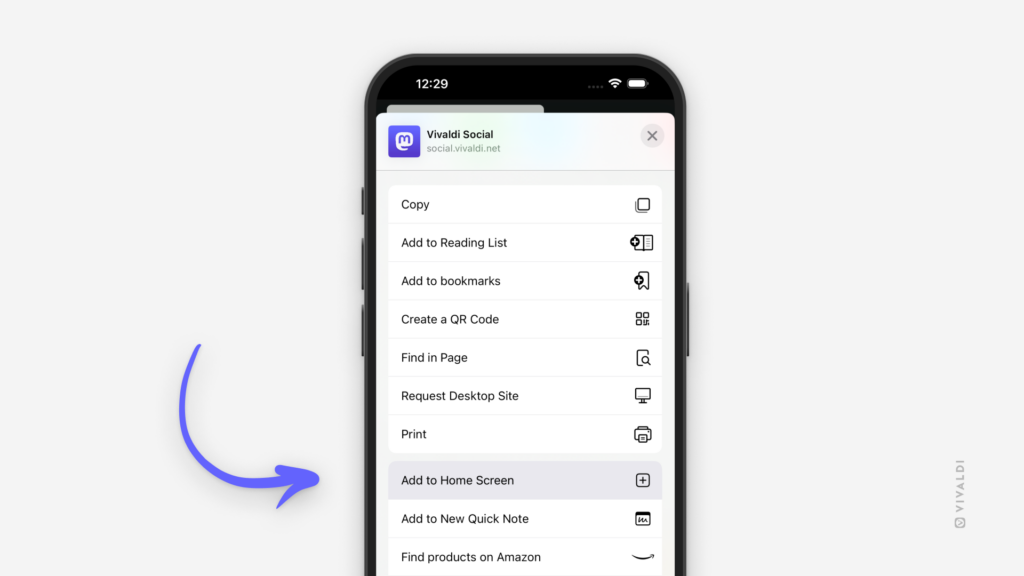Vivaldi Tips
A huge collection of Vivaldi browser tips, tricks and hacks.
Tip #587
November 1, 2024
Ctrl/⌘ + double-click on a tab to select all tabs from the same domain.
You can hold down the Ctrl/⌘ button and select tabs individually, or use Shift + click to select several tabs in a row. But there’s something very satisfying about having tabs scattered all over the Tab Bar and watch all the ones from the same domain get selected and highlighted with one simple move.
You can even use these shortcuts together to get a mixed selection of tabs faster.
Tip #586
October 31, 2024
Access your most visited web pages on mobile from the Top Sites group on the Start Page.
In addition to Speed Dials, you can have an automatically generated group of your most visited web pages on the Start Page.
To enable Top Sites:
Option 1
- Open a new tab with the Start Page.
- At the bottom of the page or from the 3-dot menu in the top right corner of the Start Page, open “Customize Start Page” settings.
- Toggle on “Display Top Sites”.
Option 2
- Go to
 Vivaldi Menu > Settings > Start Page.
Vivaldi Menu > Settings > Start Page. - Toggle on “Display Top Sites”.
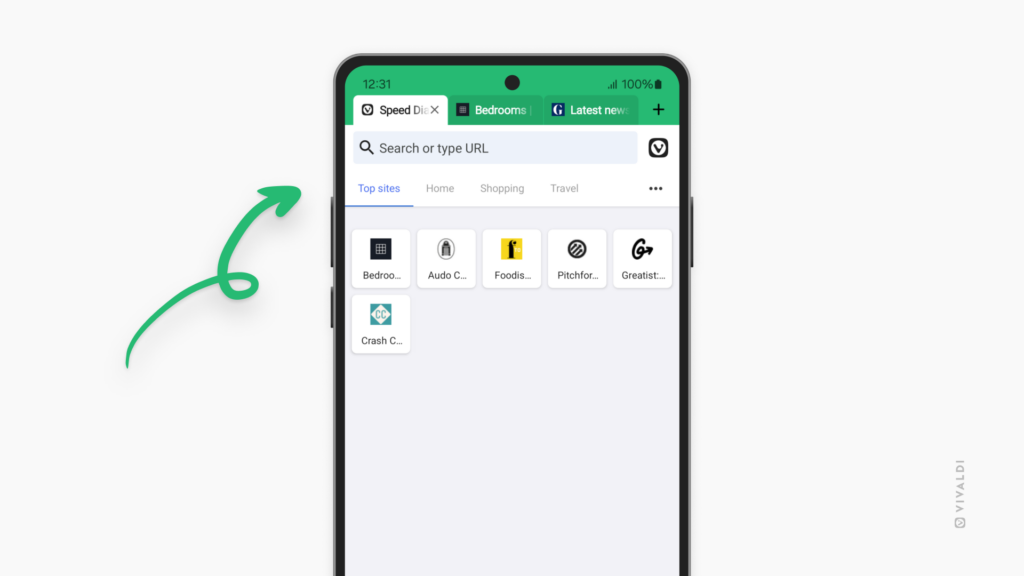
Tip #585
October 30, 2024
Skip scrolling and jump to the latest emails with a click of a button.
Vivaldi Mail‘s “Jump to Latest” button makes it easy to hop back to the most recent email with a single click.
The button is only visible when the newest emails are out of view. Whether the button is at the top or bottom of the list depends on whether you sort your mail in ascending or descending order.
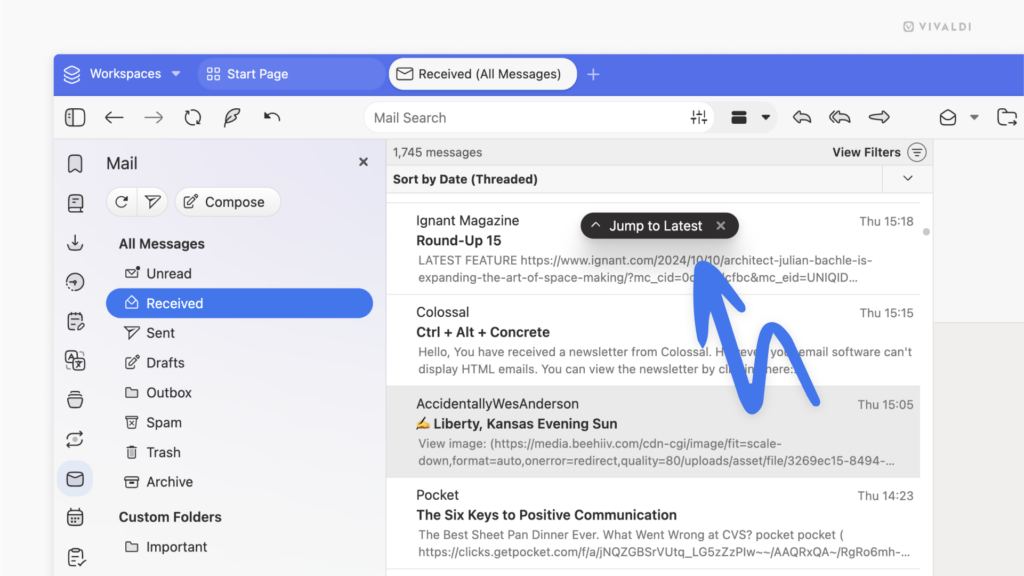
Tip #584
October 29, 2024
Fill your Dashboard with useful widgets.
Latest emails, tasks, newest feed articles, most visited sites, favorite bookmarks, and more can be pulled into the all-in-one control center – the Dashboard.
To add a new widget:
- Go to the Dashboard.
- Click on “+ Add a Widget” at the bottom of the window.
- Click on the widget you want to add.
Some widgets, like Date and Tip of the Day, can be added to the Dashboard once, but most can be added multiple times. This allows you to display different content in each widget, such as different email accounts, calendars, bookmark folders, etc.
Tip #583
October 28, 2024
Edit Tab Stacks directly from the Tabs bar in Vivaldi on Android.
To reorder tabs in the stack, rename the stack, and more, you’re probably opening the Tab Switcher, looking for the stack, and opening the stack view in the Tab Switcher. But there’s a shortcut to get to the Tab Stack view directly from the Tab Bar.
To open the Tab Stack for edits:
- Long press on the Tab Stack on the Tab Bar.
- Select “Edit Tab Stack”.
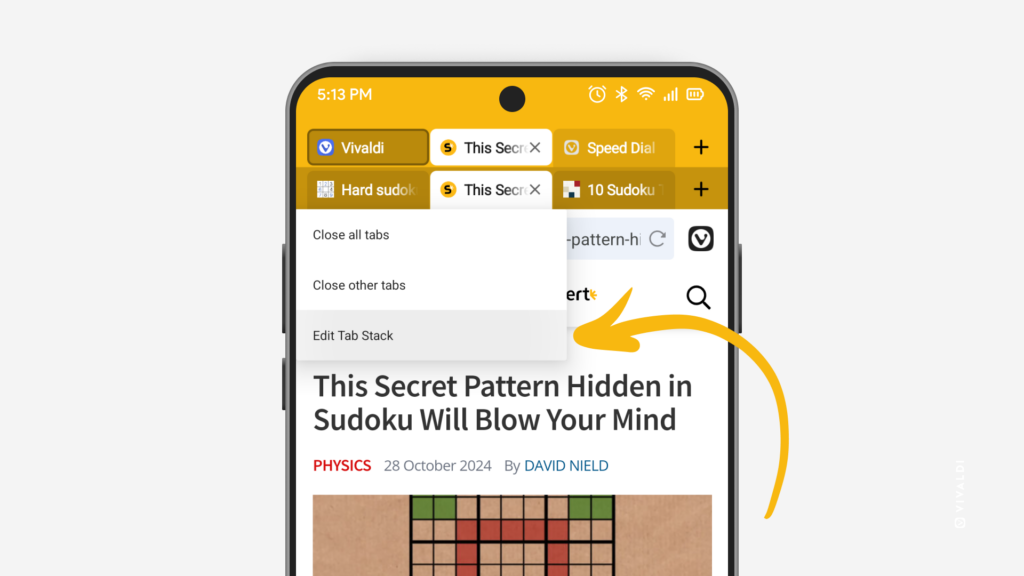
Tip #582
October 25, 2024
Divide your feeds into folders in the Vivaldi Feed Reader to group them by topic.
Staying on top of your favorite content in the Vivaldi Feed Reader is easier when you have the feeds you follow neatly organized into folders.
To add a new Feeds folder:
- Open the Feeds Panel.
- Near the top, click on the
 New Folder button. Alternatively, right-click on an existing feed or feed folder and select “New Folder” from the context menu.
New Folder button. Alternatively, right-click on an existing feed or feed folder and select “New Folder” from the context menu. - Give the new folder a name.
- Click “Add Folder”.
- Drag-and-drop feeds into the folder.
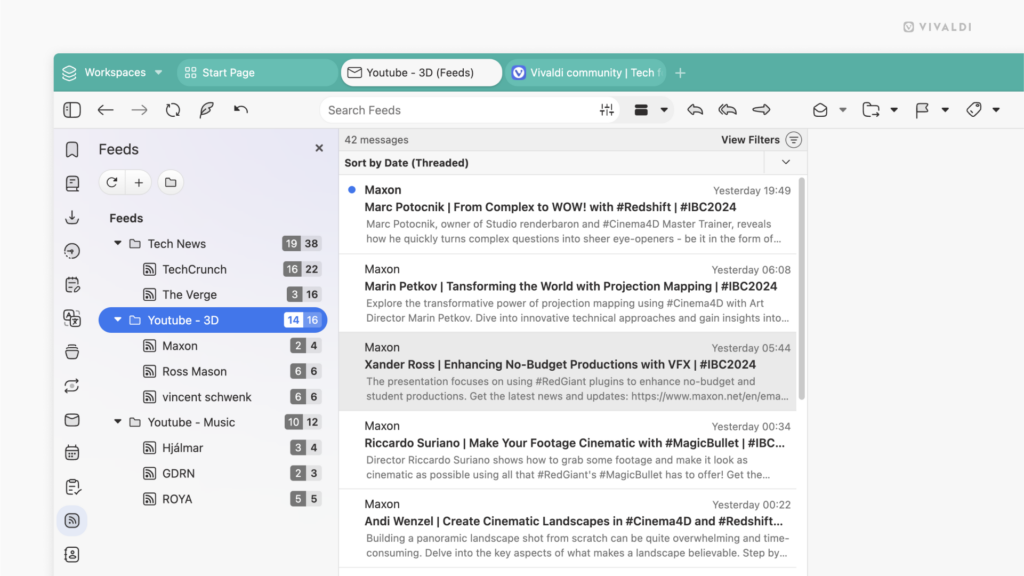
Tip #581
October 24, 2024
Make your choice between spacious and compact user interface layouts.
Do you prefer to give the buttons on the toolbars plenty of breathing room, or do you want them packed together nice and snug next to each other? As with most things in Vivaldi, you’re in control and can decide what works best for you.
To change the UI density:
- Go to Settings > Appearance > Window Appearance > User Interface Density.
- Choose between:
- Regular i.e. the more spacious layout, and
- Compact layout.
Tip #580
October 22, 2024
Fade the user interface colors of the browser windows you have open in the background.
When you’re viewing multiple browser or app windows side by side, it can be difficult to see, which one you’ve focused on. Fading Vivaldi window’s colors when it’s not in focus helps to make it more obvious.
To enable background window color fading:
- Go to Settings > Appearance > Window Appearance.
- Enable “Fade Colors in Background Windows”.
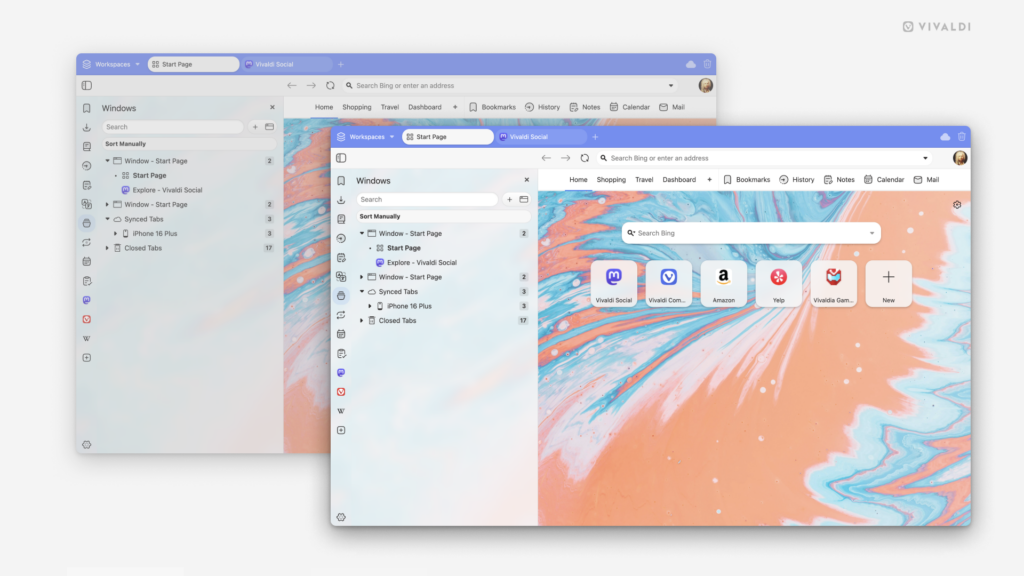
Tip #579
October 21, 2024
View and manage all files you’ve uploaded to your blog on vivaldi.net from the same place.
Images, videos and other types of files can convey important information or just decorate your blog posts. On your blog on vivaldi.net you can manage all media files in the Media Library.
To access the Media Library:
- Go to your blog’s Dashboard (for example, by clicking on the blog’s name on the black menubar at the top of the blog).
- Click on “Media” in the menu on the left side.
In the Media Library, you can upload new files, as well as view, edit and delete existing files.
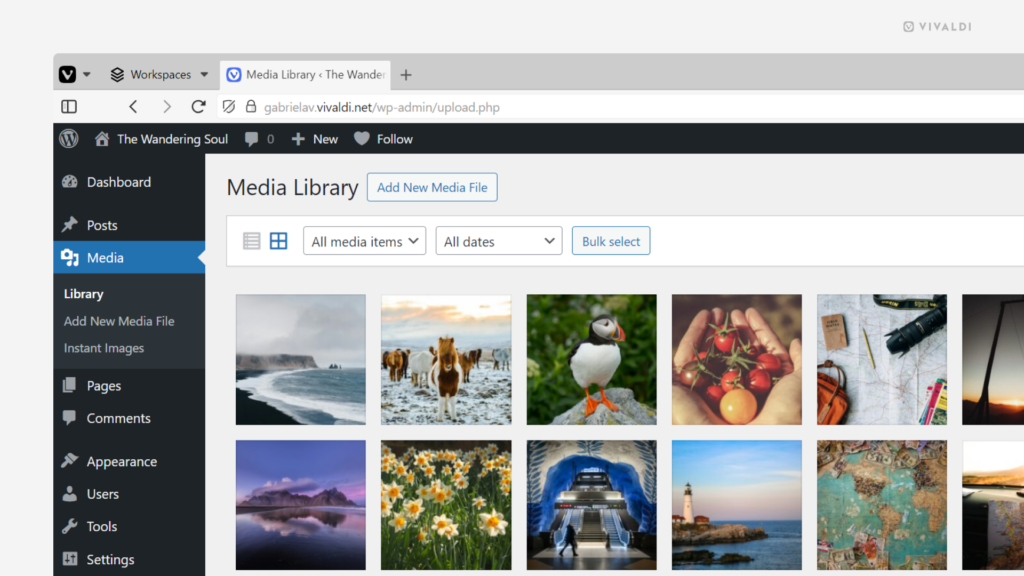
Tip #578
October 18, 2024
Click and drag to easily resize or minimize Vivaldi Mail’s Quick Reply.
Is your quick reply email getting longer than expected or do you temporarily want to hide it altogether?
To resize the Quick Reply field:
- Place the mouse cursor on the top edge of the Quick Reply section.
- Click and drag upwards to expand the area and downwards to make it smaller. Drag all the way down towards the bottom edge of the window to minimize it altogether.
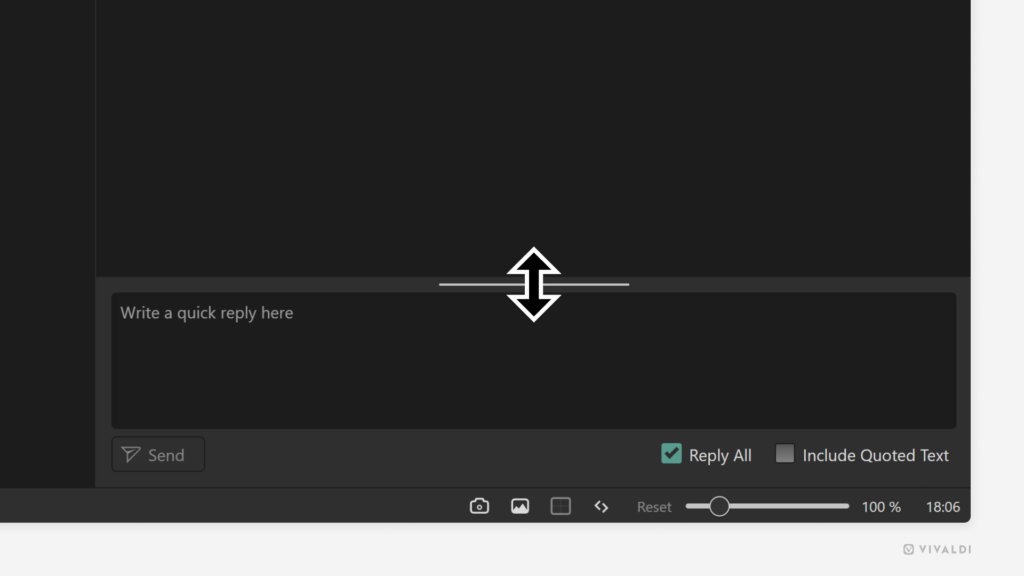
Tip #577
October 17, 2024
Give your Speed Dial folders a personalized look by adding custom thumbnails.
In addition to individual Speed Dial bookmarks, you can add thumbnails to Speed Dial folders (see Tip #69).
To add a custom thumbnail image to a bookmark folder:
Option 1
- Open the Start Page.
- Right-click on a folder and select “Select Custom Thumbnail”.
- Locate the image file you want to use.
- Click “Open”.
Option 2
- Open the Bookmarks Panel or Bookmarks Manager.
- Select the bookmarks folder.
- In the information section (name, nickname, description), hover over the folder icon.
- Click on
 “Select Custom Thumbnail”.
“Select Custom Thumbnail”. - Locate the image file you want to use.
- Click “Open”.
The recommended image size is 440×360px and most image formats, including animated GIFs, are supported.
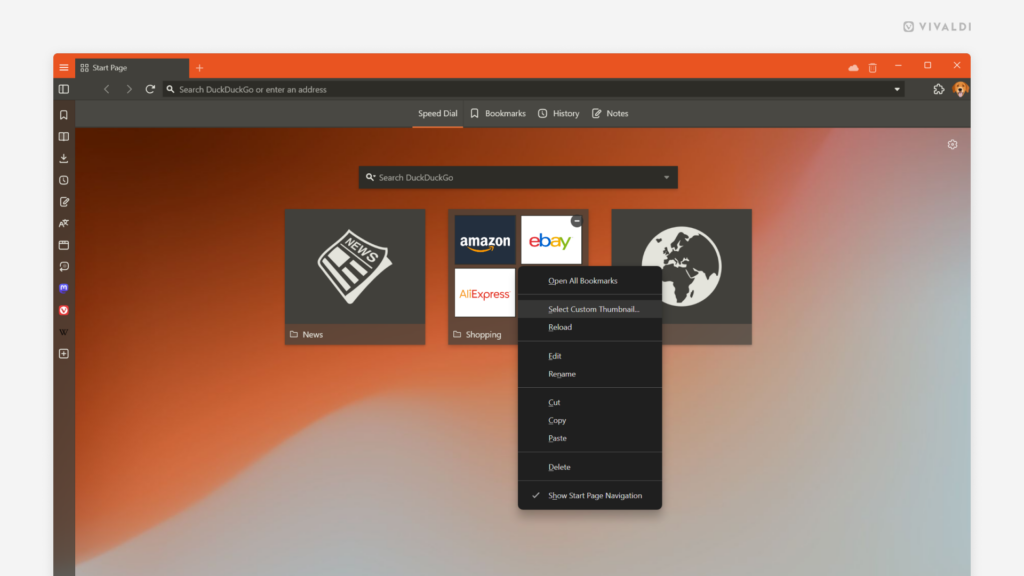
Tip #576
October 16, 2024
Add Home Screen shortcuts for your favorite web pages in Vivaldi on iOS.
When Vivaldi is your default browser on iOS, you can create web page shortcuts for the Home Screen. That way you can access your most viewed websites even faster.
To create a Home Screen shortcut:
- Open the web page you want to add to the Home Screen.
- Go to the
 Vivaldi menu > Share.
Vivaldi menu > Share. - Select “Add to Home Screen”.
- If needed update the shortcut name.
- Tap on “Add”.
